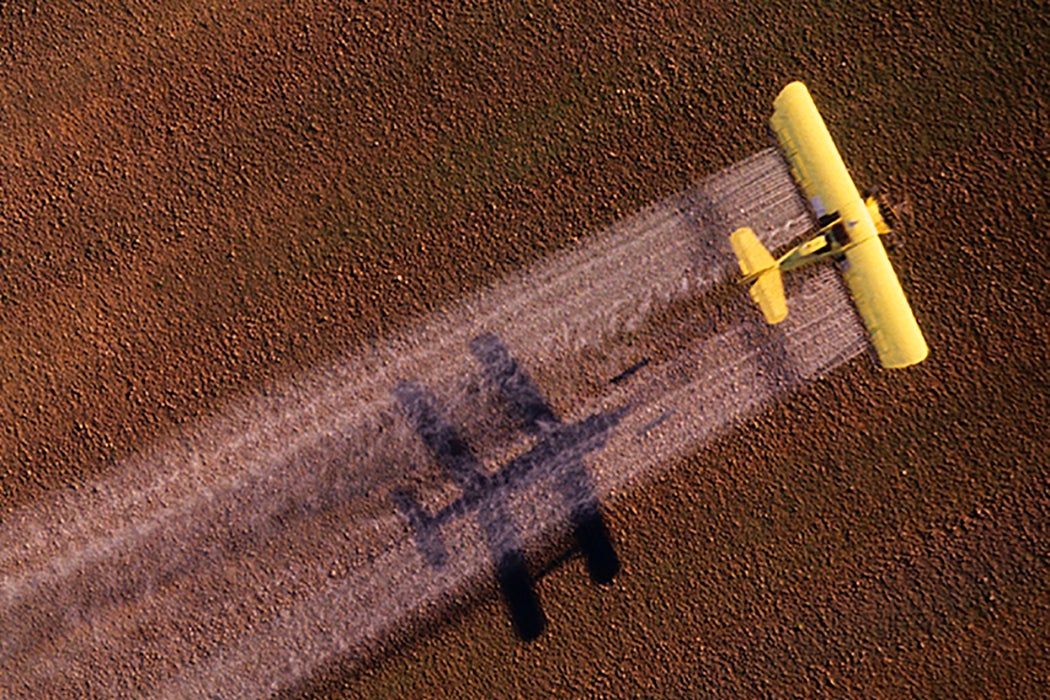The twentieth century was an era of devastating world wars, with tens of millions of victims. The century also saw a declaration of war on insects as pests and disease vectors, with untold billions of victims. This “war on insects” wasn’t just a metaphor: it was full-on chemical assault against nature, with ramifications up and down the food chain.
There were deep connections between these wars against nations and wars against nature. Indeed, as historian Edmund P. Russell III argues, you can’t separate them: “In the first half of the twentieth century, the science and technology of pest control sometimes became the science and technology of war, and vice versa…The ability of human beings to kill both national and natural enemies on an unprecedented scale, as well as fears about those abilities, developed in the twentieth century partly because of links between war and pest control.” These links, as Russell describes, were scientific/technological, institutional, and metaphorical.
During World War I, insecticides were developed as by-products of research into nerve gas and explosives. Existing insecticides, like the cyanide and arsenic used to fumigate orchards, were turned to military uses, causing shortages for agriculture. This war, which saw the first major use of chemical warfare, has been dubbed the “chemist’s war.”
After the war, the United States of America’s Bureau of Entomology and Chemical Warfare Service worked together for their separate but related agendas. The Bureau’s L. O. Howard declared “War Against Insects” in his 1921 speech as retiring president of the American Association for the Advancement of Science.
Starting in the early 1930s, the Nazis, in control of German’s advanced chemical industry, developed potent nerve gasses. They also exponentially expanded upon previous centuries of anti-Semitism in portraying Jews as vermin and insects. Zyklon B was an insecticide before it used to kill people in concentration camps.
Russell begins his history with illustrations from a U.S. Marine Corps magazine and a American chemical industry journal, both published during World War II. Both portray America’s enemies as vermin in need of “annihilation.” The American war in the Pacific, in particular, went the way of a dehumanizing “redefinition of human enemies as animals, including insects.” The Japanese were portrayed as subhuman, cockroaches, mice, ants, gophers, and other things needing to burned-out and exterminated. As the Chief of the Chemical Warfare Service noted in 1944: “the fundamental biological principles of poisoning Japanese, insects, rats, bacteria and cancer are essentially the same.”
As Russell notes, “extermination,” meaning to utterly destroy, is concept that comes from the fourth century. Even earlier, the Old Testament described insects as invading armies. But the twentieth century saw a massive shift in scale of human slaughter as technology, industry, and states became powerful enough to wage total war. By 1944, entomologists were demanding “total war” against insect pests as well.
Want more stories like this one?
World War II also saw DDT used to combat mosquitos and lice as vectors of malaria and typhus. The chemical industry transitioned to peacetime by pressing for DDT’s use in all walks of life. The “non-target” species destroyed in DDT tests and wartime uses were ignored.
In 1944, Popular Mechanics described “Our Next World War –Against Insects”: “This one will be a long and bitter battle to crush the creeping, wriggling, flying, burrowing billions whose numbers and depredations baffle human comprehension.” In August 1945, on the same page as photos of the atom bomb on Hiroshima, Time magazine announced DDT’s unrestricted release for civilian use. One DDT bomb soon being sold was branded as Insect-O-Blitz, alluded to the Nazi military tactic.
By the end of the war, writes Russell, the “lines between human and insect enemies, military and civilian institutions, and military and civilian technology had all been blurred.” War was pest control, pest control was war.
Since Rachel Carson’s Silent Spring (1962), the metaphor of war against nature has been blunted by the awful realization that collateral damage to life also includes humans. But our chemical warfare against life continues.







